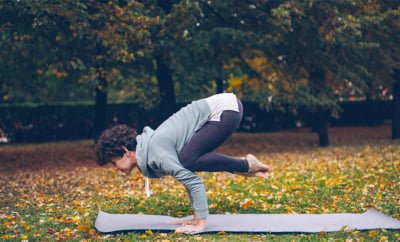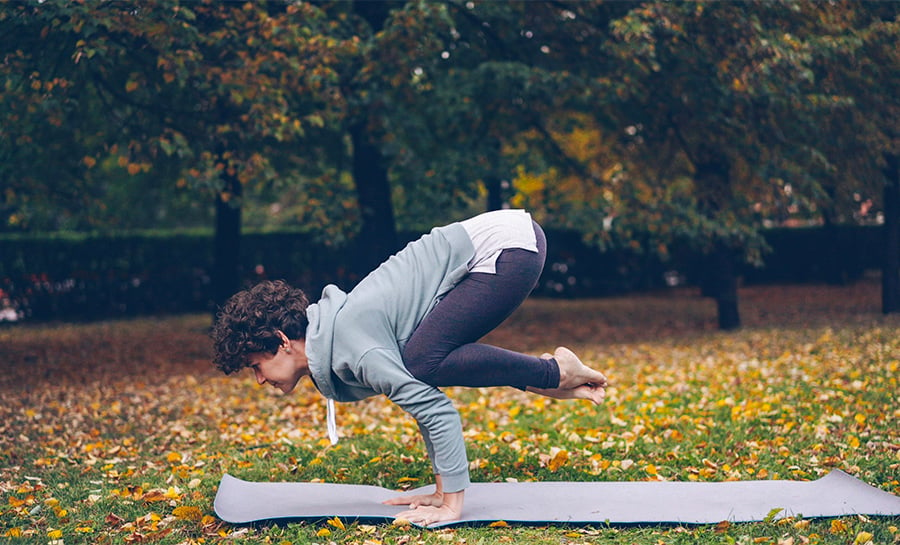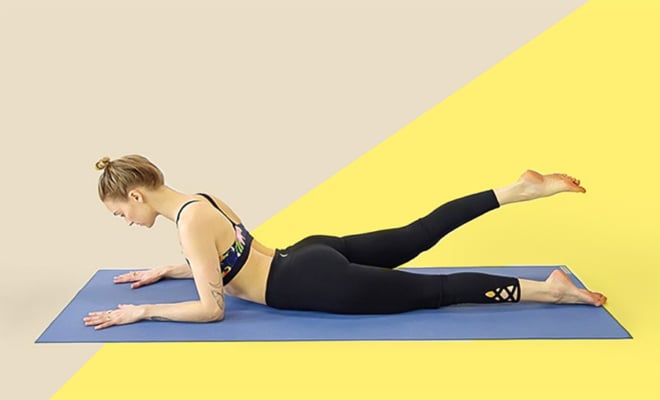4 Ways SUP Yoga Teaches Us Traditional Yoga Principles

SUPYoga feature
If you’re think of bendy bikini clad beach beauties showing off their flexibility on a paddle board surrounded by crystal clear water on a sunny day when you hear the words SUP Yoga, you are not alone.
Due to its Instagram influencer-worthy glam shots, SUP Yoga has the stigma of being “just another fad” in the yoga community.
There is no doubt that SUP Yoga is a great workout to enhance your personal yoga practice and to enhance stability, flexibility, and core strength. But it goes much deeper than that.
Did you know that one of the minimum requirements for a SUP Yoga teacher training is the 200-hour yoga teacher certification? In other words: SUP Yoga teachers must meet the same educational standards as traditional yoga teachers.
SUP Yoga and yoga not only share the same asanas (poses), but also the same moral and ethical codes of Yamas (social restraints) and Niyamas (self-disciplines).
Learn All About the Yamas and Niyamas From the Yoga Sutra
The ancient core principles of the Yamas and Niyamas from the Yoga Sutras of Patanjali serve as a guideline for how we relate to other people, our environment, and the practice of self-care.
SUP Yoga is an amazing opportunity to incorporate these principles into your yoga practice and to integrate them into your life.
Here Are 4 Ways SUP Yoga Helps You Learn and Embody Yoga Principles:
Have you ever done a Downward Dog while trying to balance on a floating board and not fall into the water?
Unlike on a mat on land, a board floating on water will respond to every little move you or the water makes. You will need to readjust your body weight and your positioning accordingly while battling the unpredictability of water and wind.
You’ll feel the poses in parts of your body you never even knew existed! But SUP Yoga will do more than just tone your body.
Here are four examples of how SUP Yoga can deepen your yoga practice by making you explore yoga principles in a new and exciting way!
5 SUP Yoga Poses You Can Practice On Dry-Land
1. SUP Yoga Fosters Tapas (Purification Through Discipline)
Tapas is using discipline as a pathway to happiness.
Practicing traditional yoga asanas on a floating surface challenges our understanding of a pose: it forces us to put more effort into something that usually might come effortlessly on a mat.
This ignites a fire in us, which represents the “purification through heat” process.
2. It Puts the Yoga Principle of Svadhyaya (Self-Study) Into Practice
Svadhyaya is deeply connected to getting to know one’s body, soul, and spirit and represents our search for meaning.
Practicing SUP Yoga gives you an opportunity to focus on areas of your body and breath that you’re usually not aware of. This self-reflection outside of our comfort zone provides you with a deeper understanding of the purpose of the pose.
5 Ways to Deepen Your Self-Study Using Svadhyaya (the Fourth Niyama)
3. It Teaches Aparigraha (Non-Possessiveness or Non-Attachment)
Aparigraha is the conscious decision not to hoard or accumulate material goods. It also represents the idea of letting go of ideas and attitudes that no longer serve us.
How to Find Inner Peace With Aparigraha (Non-Attachment), the Fifth Yama
During SUP Yoga, you are balancing on an unstable surface exposed to the power of elements like wind and water.
Letting go of the need to control a situation and expectations you might have of yourself is vital. Instead of fighting the elements, it’s all about working with them to create a pleasurable experience.
4. Its Core Essence Is Ahimsa (Non-Violence)
As a water-based outdoor activity, SUP Yoga deeply resonates with the principle of Ahimsa.
It’s all about cultivating the sensation of peace within ourselves and the world around us.
SUP Yoga allows a much deeper connection to the environment than a traditional yoga practice, encouraging kindness toward the ocean and its creatures. A greater appreciation and gratitude for Mother Earth and the ocean is the natural consequence.
How Would Your Highest Self Speak? Why You Need to Practice Ahimsa Through Positive Self-Talk
SUP Yoga Can Teach You Yoga Principles If You Let It
On a physical level, SUP Yoga lets you explore asanas in a completely different way.
On a mental level, it will challenge your interpretation of traditional yoga principles.
This will not only expand your practice, but will also strengthen your relationship with yoga – and ultimately with yourself!
Ready to hit the water? Dive into This Peaceful Sunset SUP Yoga Flow (Video)


This Month's Letter
From the Editor
Monthly motivation and food for
thought from our founder.

























